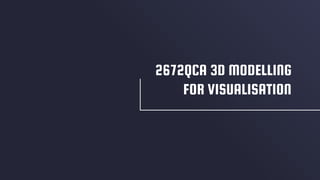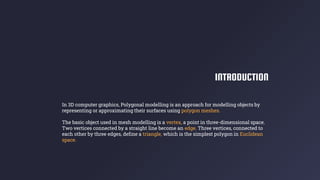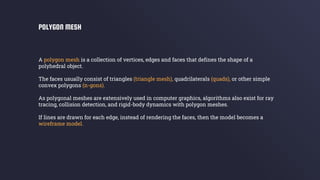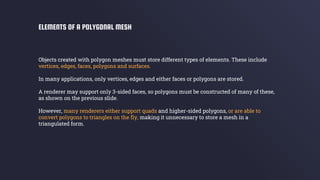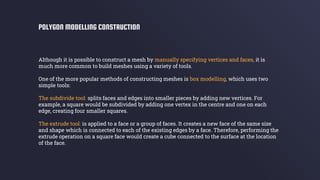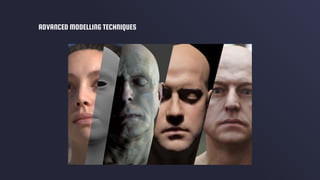This document provides an overview of polygonal modelling techniques used in 3D computer graphics. It discusses how polygon meshes are constructed using vertices, edges, and faces. Common operations for constructing meshes like box modelling and extrusion modelling are described. Refining models by manipulating individual vertices is also covered. The document emphasizes the importance of using reference materials when building 3D models.
